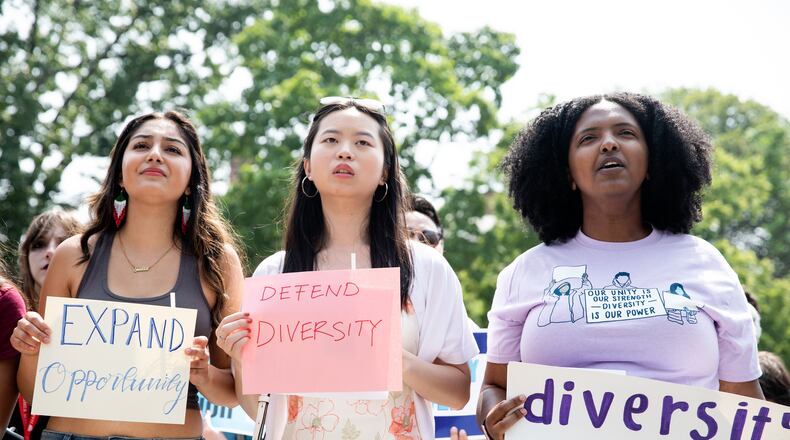An online networking platform for students applying to college released a new tool Thursday aimed at helping schools increase their racial diversity while adhering to the new legal standards in the wake of the U.S. Supreme Court’s recent ruling that struck down affirmative action in college admissions.
Free to use, CollegeVine says its Student Environment Explorer enables college enrollment teams to explore the demographic and academic makeups of states, counties, neighborhoods, and even specific high schools based on factors other than race. The tool relies on both public data from the U.S. census and internal data from CollegeVine users.
Vinay Bhaskara, co-founder and chief strategy officer of CollegeVine, said that his team began modeling the tool in October in anticipation of the court’s decision.
Bhaskara said that the Student Environment Explorer will enable admissions teams both to prioritize recruiting efforts in Black and Hispanic communities and compare students’ applications holistically.
Credit: CollegeVine
Credit: CollegeVine
While the Student Environment Explorer is marketed toward universities, CollegeVine marketing official José Mallabo believes that it will also benefit academically talented students with their college search. Mallabo, who previously worked at Morehouse, a historically Black college for men in Atlanta, said the tool should aid colleges in the “discoverability of good students.”
Though most public schools in Georgia have not used race-based affirmative action since the early 2000s, Bhaskara said that the tool is still valuable in the state.
“Regardless of whether they’ve used affirmative action or not in the past, part of what’s being revealed by this tool is where there is an opportunity to find qualified Black and Hispanic students that can be admitted without legal risk,” Bhaskara said.
Many college officials anticipate that the decision to outlaw race-based affirmative action practices will lead to a drop in enrollment of Black and Hispanic students at highly competitive colleges and universities.
Morehouse President David A. Thomas has called the court’s decision “a travesty for the nation,” particularly because it may lower the number of people of color who will graduate from top colleges and ascend to prominent positions and jobs with influence. Chief Justice John Roberts authored the court’s majority opinion, writing that colleges have “concluded, wrongly, that the touchstone of an individual’s identity is not challenges bested, skills built, or lessons learned but the color of their skin. Our constitutional history does not tolerate that choice.”
Walter Kimbrough, the former president of Dillard University and of Philander Smith College, anticipates that colleges and universities will likely spend more time and money on recruitment in the post-decision environment. He said schools will have to recruit in more communities, and that technology will likely help them “pinpoint different areas.”
“Colleges and universities know how to recruit top-notch athletes, and now you have to apply that for ... diverse scholars,” said Kimbrough, who has degrees from the University of Georgia and Georgia State University. “But you’re going to have to go into places you haven’t gone before.”
CollegeVine said that admissions teams can use the tool to target recruitment efforts at high schools with large populations of Black and Hispanic students by toggling a map for race and certain academic benchmarks, like test scores or grade-point averages.
“There isn’t anything that prohibits an additional emphasis in recruiting in certain areas,” Kimbrough said.
CollegeVine’s tool also calculates a high school’s “environment index,” which assesses how much adversity students there face based on what Bhaskara calls “race-neutral” factors, like median household income and student-teacher ratios. A higher environment index corresponds with a more challenging high school environment.
Credit: CollegeVine
Credit: CollegeVine
“This is not a perfect replacement for what affirmative action or the consideration of race allows universities to do, but this is our attempt at helping to bridge that gap,” Bhaskara said.
About the Author
Keep Reading
The Latest
Featured




